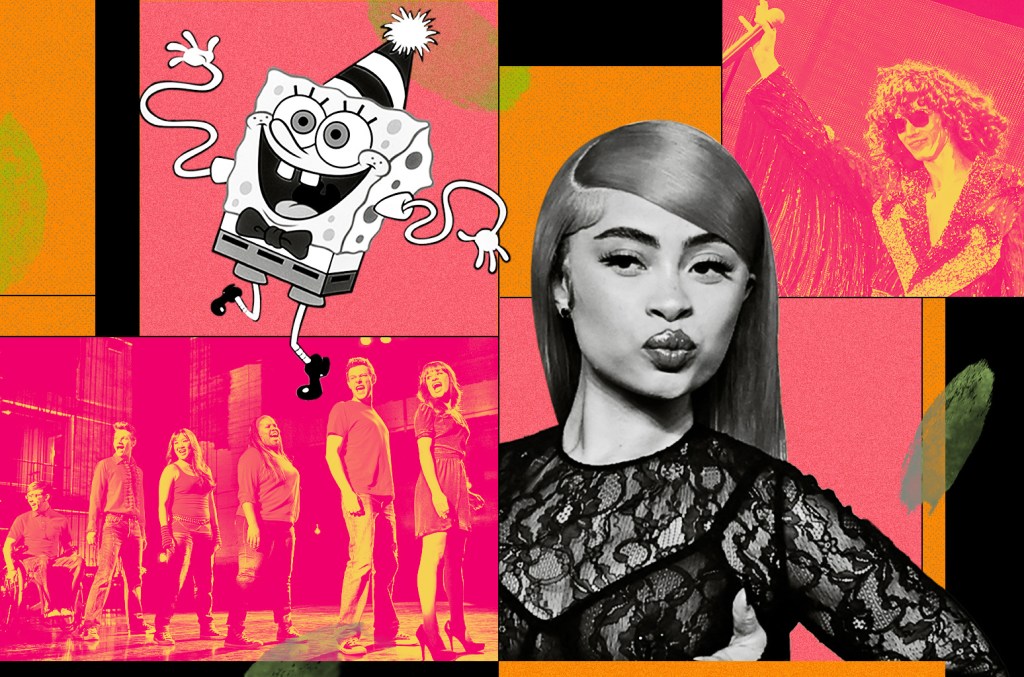If you've been scrolling through TikTok recently, you may have noticed that it sounds different than it did a few months ago.
Users have gotten creative with their audio choices. They have posted edits to a song from the children's cartoon Little EinsteinsThe Spongebob Squarepants theme song, music from the quiz platform Kahoot, Kevin MacLeod's royalty-free track “Sneaky Snitch” and the 20th Century Fox theme. There were dances to classical music and the ringtone of the iPhone. Users have even posted screenshots of what it's like to scroll through their feeds, one with the text, “This is the funniest era of TikTok ever.”
That's because Universal Music Group (UMG) and TikTok failed to reach a new licensing deal after the previous one expired on January 31. UMG issued an open letter on January 30 citing concerns about artificial intelligence, compensation, harassment and copyright infringement on the social networking app. TikTok responded in a statement, saying: “It is sad and disappointing that Universal Music Group has put its own greed above the interests of its artists and songwriters.” Music credited to songwriters signed to Universal Music Publishing Group disappeared late last month after a grace period.
TikTok has proven vital to artists, breaking new artists' careers and making songs go viral, but UMG's delisting has also hit social media creators hard. Kenna Dean, 22, a dance creator with 1.7 million followers on the app, is one of several TikTokers who discovered her videos featuring music by Universal artists — including one with 1.5 million likes — had been muted.
“It was really frustrating, because it was time to put those videos out,” says Dean. “You have feedback on them and you have other people who have done your dances out there. And then all that disappeared, which was worrying.”
Dean had plans to film a dance collaboration with two other creators, @karaleighcannella and @jaedengomezz, the same day the catalog came out. “All the dance creators, we kind of woke up and were like, 'What are we dancing?'” says Dean. They encountered Niana Guerrero's viral dance (which now has over 14 million likes) to Kevin MacLeod's “Fluffing a Duck” – a royalty-free track – as well as a Samsung alarm clock dance. “I just thought it was so funny,” says Dean, who jumped on both trends.
UMG is just one part of the music industry. There are, of course, many artists who aren't affiliated with Universal or any record label, and that music is still available for creators to use on TikTok – and many users have chosen to just use the music they have on hand. Dean pointed out that she tries to use more songs from independent artists.
“I think it's an opportunity that we can prove is also worth listening to,” says independent artist and creator Charisse Chua. “Being unsigned doesn't stop us from continuing to make good music and get it out there.” Earlier this month, Chua, 19, posted a clip of her song “Would You Take It All Back?” with the caption, “umg songs may be gone [from] tiktok but mine aren't!!”
But it's still a challenge to get the music to more viewers. “I expected there to be a lot more interaction than there was,” Chua says, adding that there are many artists trying to use the app to boost their music.
Many TikTokers have also turned to covers as a way to replace missing songs. In one video, the creators danced to a cover of Lady Gaga's “Bad Romance” from the Alvin and the Chipmunks movie theater. Another user made a video of instrumental versions of medieval-style songs that garnered 1.9 million likes, with the sound used in more than 700 videos.
Joy Covers are also popular, with a clip of the Glee Cast version of “Rose's Turn” uploaded by @girlyteengirl123 currently trending on the app, has been used in more than 300,000 videos and reached No. 3 on Advertising signThe TikTok Top 50 chart. A remix of Ice Spice's “Think U The Shit (Fart)” in the style of the Nintendo character Toad was uploaded to TikTok on January 26 – just days before the license agreement expired – and has since received 2 million likes, having been used in nearly 9,000 videos, often as a joke substitute for the original song. And some users took matters into their own hands, recording the covers themselves.
“I just thought, 'Well, I'm a singer. I could just do my own acapella version,” says Vicky Ntamag, 25, a musician and dancer. She started uploading her covers on TikTok after the controversy, starting with a cover of Nicki Minaj's “FTCU” and answering a few requests in her comments. Her cover of ATEEZ's “Crazy Form” has been used over 200 times and her a cappella version of RIIZE's “Talk Saxy” has been used in over 2,770 videos. RIIZE even posted a video of him dancing on the cover of Ntamag which now has a million likes.
At the time Ntamag posted the cover, the original song was still available on TikTok (RIIZE is signed to Sony Music Entertainment-owned RCA), but it has since been removed as the song is under Universal Publishing. RIIZE posted a video using Ntamag's cover with the text “don't worry everyone…we still got that sound!”
Some of these covers are gaining real traction – and attention from bigger artists. Mikael Arellano's cover of Taylor Swift's “Bejeweled” received 1.5 million likes, with OneRepublic commenting: “You can help us too.” Arellano then posted a video of himself singing the band's “Counting Stars,” and OneRepublic used the audio in two videos uploaded to his account. Conan Gray, who recently said rolling rock, “I think there will be a lot of interesting acapella covers from UMG artists until this is settled,” he sang in a clip of his own music video.
“The TikTok community is really strong,” says Ntamag. “And we help each other with the songs. That's why I accept the requests because some of them want to use them for their edits or there are certain songs that were removed and I will do acapella [version] to help my fellow TikTokers.”
The common aspect drives TikTok. Building on a previous joke is how memes work and audio sharing is integral to it. Participating and even trending is the shared experience of being on TikTok, and certain sounds define seasons of the app — even if those sounds happen to be TV show themes and ringtones to capture the beginning of February. In the immediate aftermath of the controversy, TikTok seemed to be moving away from some of the more creative choices towards using music still available on the app, although covers and royalty-free tracks are still popular.
“We were all a bit upset when we saw that the music took off,” says Ntamag. “But I feel like it's also an opportunity that we can use to share who we are and how funny we are and what kind of music we make and how creative we can be.”



